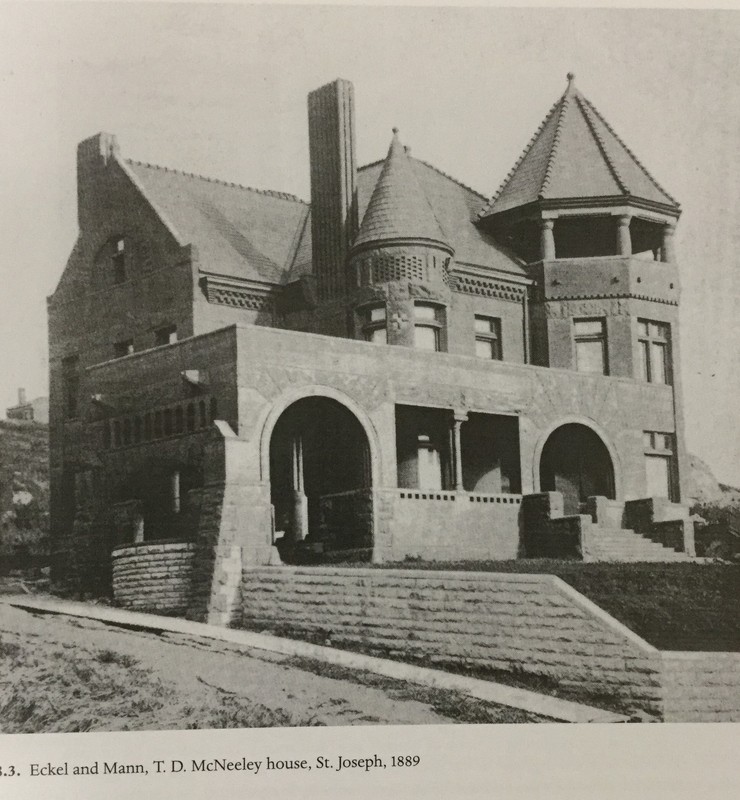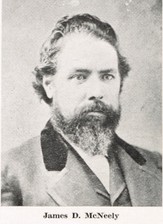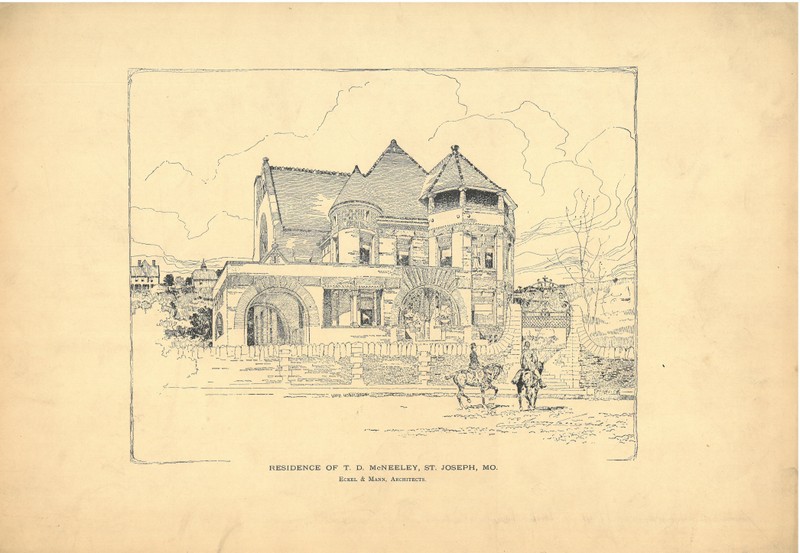J.D. McNeely House
Introduction
Text-to-speech Audio
Images



Backstory and Context
Text-to-speech Audio
James Dowd McNeely was born in Ireland in 1831 and came to the United States when he was 21 years old, eventually making his way to St. Joseph in 1856. Once arriving in the city, he established a wholesale grocery and liquor business at the northeast corner of Fifth and Messanie Streets, running the store until his death in 1899. In 1861, he married Ellen M. Treacy. They had nine children together, six of whom survived into adulthood. Ellen’s father, James Treacy, was an engineer. He oversaw the construction of Fort Leavenworth and Fort Riley. Treacy purchased the lot of land the McNeelys would eventually build their home upon from John Patee when he established Patee Town.
A prominent citizen, James Dowd McNeely served on the City Council in 1863-1865, 1867, 1876, and 1878-1879. He was on the board of directors of the St. Joseph Bridge Building Company in 1871, constructing the bridge across the Missouri River by 1873. This sparked his interest in railroads and he expanded his mercantile business by becoming a railroad contractor. McNeely oversaw the expansion of the Rock Island line to the west of St. Joseph over the newly constructed bridge as well as the St. Joseph and Des Moines Railroad in 1877. McNeely also represented the state of Missorui at the 1876 Philadelphia Centennial Exposition.
In 1890 J.D. McNeely constructed a magnificent home at the corner of Locust and Eleventh Streets. An 1890 article detailing the magnificent Romanesque homes constructed by Eckel and Mann in the previous year details McNeely’s open tower, combination porch and porte cochere, and intricately carved stairway and sideboard. The home still retains the vast details of woodwork, stonework, parquet floors, built-in buffet, eight tiled fireplaces, stained glass and an impressive curved glass window difficult to replicate in modern times. The archways, towers, and turrets are classic Harvey Ellis and the home differs very little from Ellis’ original 1889 rendering.
Colonel John Dowd McNeely, James and Ellen’s son, was the last resident of the McNeely home. Colonel McNeely was a veteran of four military campaigns, from the Spanish-American War to World War I, and a local lawyer who offered pro bono service to the early St. Joseph Museum. The James McNeely Estate sold the house to George J. Strumpf in 1955 and it was converted into a senior living facility. It remained in that capacity for another fifty years, but has recently returned to a single family home.
